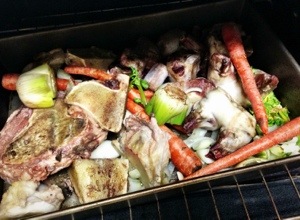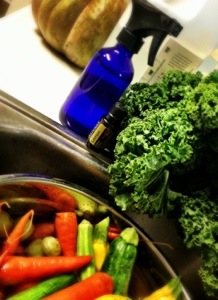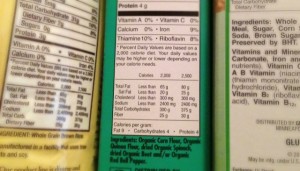OK so I have made my own stock before with chicken and turkey, but I was more intimidated to make beef bone broth. With the chilly temps today and a few little ones needing an extra immunity boost, I knew it was time to just jump in and get this going! Our pediatrician highly recommended that we incorporate homemade bone broth into our diets on a regular basis, so here we go! I followed a lot of the steps from this recipe from Nourished Kitchen http://nourishedkitchen.com/beef-stock-recipe/
I started out with 9 lbs of assorted organically raised beef bone parts. I consulted the farmer directly on this since I figured he’d be a pretty good resource. I had a bag of oxtails, a few feet (cross-cut), several split marrow, a hefty beef shank with a little meat on it, and a few other things I should have written down. So I pulled out my massive roasting dish, set the oven to 400 degrees, drizzled olive oil down and put all that in the oven for a bit.
The best thing is to save a bag full of veggie ‘scraps’ for your broth as you chop veggies for meal prepping. I hadn’t been saving them up to this point, so for my first attempt I just chopped a few bunches of organic celery and used the ends and leafy parts, threw in a bag of organic carrots, several organic onions and about a pint of organic mushrooms. Roasting veggies makes them taste AMAZING, so why not do that with the stock, right? I threw all these chunked up veggies onto the top of the bones and let it all roast together. I left them in for about an hour and a half (until I knew I had to move on to the next step and still make it to bed at a decent hour).

This is the part I don’t have an exact science for, since the bones and amounts that I have are so different each time. I have a massive stock pot so I pulled that out onto the stove and then got out my large crock pot as a back-up simmering station.
I divided all of the roasting pan goodies into the stock pot and crock pot, filled them both up with water and brought it to a boil. Once it was boiling, turned it down to a simmer and added in 2 Tbsp of organic apple cider vinegar and a dash of cinnamon (because I cannot make a beef dish without it lately). I’m obsessed with cinnamon.
Do NOT add salt to your bone broth, as it will condense down and can become too much as the stock thickens. Better to add it to the final dishes as needed when you actually use the broth.
So it has been there on a low simmer all night and the house smells yummy.

Can’t wait to sip some of this for our lunch today! It is good straight up with a dash of seasoning, or I add it as the base for ALL of my home made soup recipes which we make frequently…especially in these chilly months! Let me know how yours turns out!







